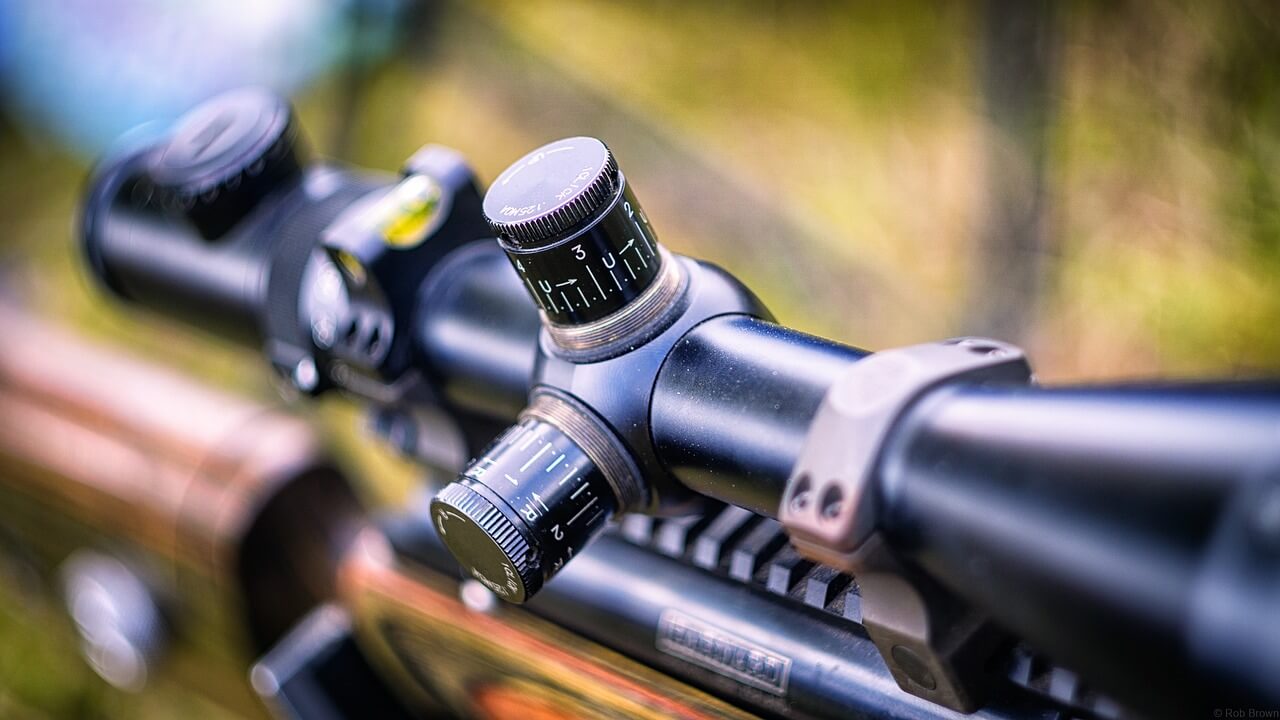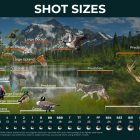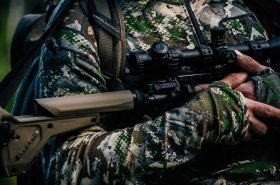Shooting at your target is one thing, hitting it however, is a whole other ball game. There are many factors that come into play in order to take an accurate shot and we could write for days (or years) in attempts to cover everything. A lot of these factors and techniques though will be all for naught if you don’t have a proper sighting device on your gun. So today we are going to give you an overview of the main types of sights that you will have on your firearm. There are four main categories of sights you will typically find on hunting firearms; iron sights, also known as open sights, peep sights, reflex sights, commonly referred to as red dot sights, and telescopic scopes.
First, let’s start with your iron or open sights. These are the sights that typically come standard on many firearms. They can vary by manufacturer or type of gun you are using, for example from shotgun to rifle, but will have similar functions. These sights typically consist of a bead, or single sight positioned at the shooting end of the barrel and centered right on the top. This is commonly known as the front sight. Further back along the barrel towards the action on the gun there will be another sight piece, the rear sight. This will be two pieces side by side with a gap in the middle or a single piece with a notch in the piddle, regardless there will always be the middle open section or notch. Lining this notch up with the bead on the front of the gun is how these sights are used to aim. For shotguns, you may often see only a single bead at the front and no rear sight piece. Traditionally these sights have been made out of metal pieces affixed to the gun. However, more commonly now you will see colored beads, neon green or orange, in place of straight metal. These are a much better system as the bright color will attract the eye much quicker allowing you to pick up the bead and take aim much quicker. Iron sights are the most basic form of sight and are good for short distance shooting and quick drawing. They are not ideal for longer shots as the bead will take up much of your target and it will be harder to make a precise shot.
Peep sights are fairly similar to open sights in their functionality. These are most commonly found on rifles and consist of a front sight much like an open sight, however, the rear sight is a circular opening in which you look through. This circular aperture will help improve your focus on the intended targets and overall accuracy. Peep sights also come in more styles and different sized apertures allowing for a little more customization and again increase accuracy. Similar to your iron sights, these are good for quickly acquiring a target and will have improved accuracy over an iron sight. For a good shooter, peep sights can provide good accuracy even up to 200 yards.
Reflex sights, or more commonly known as red dot sights, are a newer addition to the market. These have started to take over in the place of peep sights as they kind of fall under a similar category of functionality, but they do certainly come with a higher price tag. Most commonly used for short to mid-range shots, these allow you to get your target in view very quickly and provide a fairly accurate shot. They commonly consist of a small red dot in the center of the sights, sometimes with crosshairs as well, that is used to aim. When properly set up, you put the red dot on your target and you’re going to hit it. With a wide view site and the bright red dot that is electronically generated these are a very ideal option for any hunter that is going to be pulling up and firing a quick shot. The main disadvantage is the accuracy these can lack when shots start to stretch out to further ranges.
Finally, we come to telescopic sights, or scopes as they are more commonly called. These are probably the most popular option on the market for anyone looking to shoot accurately especially over long distances. Although they aren’t used while shotgun hunting for waterfowl or game birds, hunters using slug guns will commonly mount a scope on their shotgun. Scopes come in a vast range of options, and we could certainly write an entire article on them alone, but will keep it to the basics here. These optics will come with a range of magnifications that the hunter can adjust by turning a dial or ring on the scope. The big benefit to these is the magnification they allow. With even a mid-level scope you can zoom right in on a target that is hundreds of yards away and it’ll seem like it is almost right in front of you. These scopes definitely allow for the highest level of accuracy and can be adjusted based upon an individual’s eyesight, so if your vision is typically a little blurry, you can often adjust the scope to compensate for this and give you a nice clear image. As mentioned there are many scope features that can be discussed, too many to do so here, but depending on the lens qualities and apertures as well, some scopes will draw in more light, giving you clearer views at targets in lower light conditions, so if you’re pushing those last minutes of daylight to hunt, your scope can again make it much easier to pick out your target. A couple of downsides to these, however, are the setup and draw time they can take. Scopes are often set up to the individual shooting them, this can take a bit more time and can mean a scope setup for someone else may not quite work 100 percent for you. They are also a little more susceptible to being knocked and pushed slightly askew. Finally, they also take a little more time to center and aim when you pull the gun up to your shoulder, so if you are hunting in tight quarters where quick draw shots are required, they might not be the ideal sight for you. With that said if you are doing any kind of serious hunting where longer shots are required and you have a second or two to take aim a telescopic sight will certainly be a worthwhile investment.






